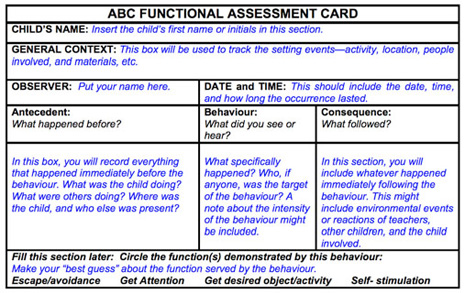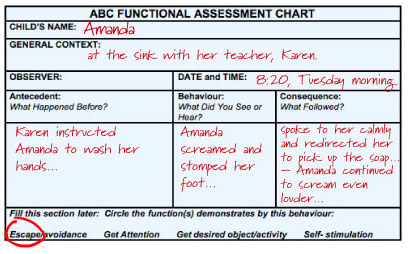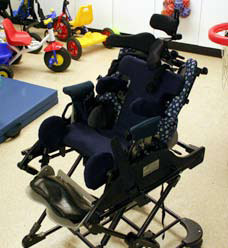
Parenting a child is perhaps one of the most challenging tasks we will face during our lifetime. Whether we consider it a job, art, or craft there are few experiences in life that prepare us for the many ups and downs that come with this unique responsibility. Nonetheless, most parents manage to raise their children remarkably well.
In addition to the usual stresses and strains of parenthood, parents of children with special needs face other pressures and must learn to cope with problems in ways that will enhance, rather than, hinder the growth of their child.
Diagnosis
Children are diagnosed at different ages. Parents may learn about a condition prior to a child’s birth, immediately after birth, or they may identify concerns more slowly as the child matures.
Regardless of when your child receives a diagnosis, your reaction may be strong and often traumatic. No parent is prepared for this news. Upon learning that your child may have special needs, most parents react in ways that have been shared with all parents before them who have been faced with this challenge.
The following is a look at some commonly reported reactions to parenting a child with special needs:
Reactions
A common first reaction is denial. Denial, in fact, may act as a protective device, giving parents additional time to adjust to and absorb information. Denial quickly merges with anger. Anger may be directed at the medical professional giving the news, a spouse, family members, and the child himself. At times, the anger will seem so intense parents feel that the world is against them. Parents may avoid medical professionals, family, friends, and even neighbours who confront them with a reality they are not ready to accept.
Fear and guilt may also be present. Fear may arise if parents are unsure of the diagnosis, the implications of it, and what the future holds. When a parent is given information about a diagnosis, it is common to only take in bits and pieces of that information. Large chunks of a discussion can disappear. You are unsure of what you have heard, or what it means. A medical or developmental professional may use jargon or terminology that is completely unfamiliar to you. You may be overwhelmed and unable to ask questions or clarify the information you do not understand. You may fear the reactions of your family members to this news and you may fear that your child will be rejected by society.
Parents may also feel greatly alienated or separated from others. You believe that no one else is coping with a situation like yours. Guilt is often associated with feelings that you could have done something to prevent this. Parents ask “Why us?” and search for explanations. Much self-reproach and feelings of remorse, or sorrow can stem from questioning the causes of your child’s special needs.
Guilt may also lead to confusion during this traumatic period. As a result of not fully understanding what is happening and what will happen, confusion may reveal itself in sleeplessness, inability to make decisions, and general overload. As with fear, confusion is often related to being forced into a world that is unfamiliar to you. Medical or developmental terms are feeling like a new vocabulary and you find that you cannot make sense of it.
Feeling helpless to change what is happening can occur. You may recognize that you cannot change the nature of the diagnosis and it is very difficult to rely on the judgments and opinions of the professionals with whom you have had contact. You are interacting with people who are basically strangers to you and with whom no bond of trust has yet been established. Helplessness is often accompanied by disappointment. Disappointment related to your expectations being changed can create a roadblock or barrier to acceptance of your child.
Rejection may also be present. Rejection can be directed toward your child, a medical professional, or toward other family members. Rejection and depression are often linked to one another.
Many families reach a stage of adaptation where they can accept their child, the diagnosis, and themselves. At this stage, families begin to find, or pull together resources to adapt to the situation and to help cope with what is to come.
Not all parents go through these stages, but it is important for parents to identify with all of the potentially overwhelming emotions that can arise and know that they are not alone. The impact of a child’s diagnosis affects different families in different ways. Keep in mind that there are many actions that you can take immediately to help you and your child.
After the Diagnosis
- Request Information
Your first visit with the doctor may leave you emotionally drained and just not capable of taking in any more information. Try not to do everything
in one visit. Set up a second or third visit with the doctor who diagnosed your child.Before you go for the next visit, write down a list of questions you want to ask, or write down questions during the visit.A few questions to consider asking the doctor can include:
- Does my child need additional testing, blood work, and assessments by other specialists?
- If so, when will the tests be scheduled and when will we know the results?
- How do you know my child has__________?
- Are there other names for my child’s condition?
- How will this affect my child’s development?
- What needs to happen next?
If you do not understand the doctor’s response to your questions, ask him to explain in greater detail. Write down the responses, or bring a tape recorder. Don’t rely on your memory! This is an emotional time for you and you may forget key things the doctor has said. Ask the doctor to give you a list of books on the diagnosis and related support services in your community. Get the information in writing and if you need a referral to another doctor or agency, request that the doctor do it immediately in your presence.
- A Second Opinion
If you have any doubts about the diagnosis or the professional who gave it to you, seek out a second opinion. Do not feel that you have only one option when it comes to having your child assessed. If a medical professional is unable to answer your questions in a manner that you find reasonable and clear, move on. You need to establish a comfort level with a medical professional who may be involved with your child for some years to come. You want to develop a sense of trust with this person and be recognized as a contributing and valued source of information about your child. You are in the best position to observe and report what your child is doing. Be confident that you know your child better than anyone else.
- Parent and Family Counselling
This unique service can assist parents and other family members to help understand the meaning of a child’s diagnosis, and assist them in developing realistic expectations for their child.Counselling sessions also provide an environment in which parents can openly express and work through their feelings. Sessions offer coping self-help skills, group relaxation, self-praise, and self-instruction. Siblings (brothers and sisters) of a child with special needs are often included in counselling sessions. These sessions help siblings work through their feelings and emotions concerning their brother or sister with special needs. It is normal for your other children to feel resentment, fear, embarrassment, and guilt. These problems, if not acknowledged and expressed in appropriate ways, may cause long-term issues.
- Talk to Another Parent
Have your doctor provide you with contact information for parent support services. He should be able to connect you with another parent who has had the same experience as you.Pilot Parents is an example of a parent support group with chapters across Canada and the United States. The program was developed by parents of children with special needs in order to offer support to parents of newly-diagnosed children. You may also be able to locate a support group in your area through organizations dedicated to your child’s particular special needs.
- Talk to Your Family and Friends
When you feel comfortable, share the information about your child’s special needs with your family and friends. You may find that you have a support network already available that you did not expect. Keep them involved and up to date with any important information about your child and family. Family and friends usually want to assist, or help you any way that they can, so let them. For example, you could have them watch your other children when you take your child with special needs to an appointment.
- Services
As stated in the first point, get your doctor to make referrals for services that will provide support to you and your child. Ask for a listing of these resources and get a contact name of a person who can provide you with more information. Feel free to call them on a regular basis to inquire where your child is on their wait list and if there are other services you can access that will benefit your child. Keep a binder at hand to hold information that is sent to you and requested of you. Write down important phone numbers and appointments that your child may have. Get written copies of all documentation from doctors, early interventionists, and therapists regarding your child.Families often represent the only long-term, responsible, and caring people in the life of a child with special needs. The family is very important. Interaction with family members deeply influences the child’s opportunities and barriers, challenges and expectations, ambitions and frustrations, and general quality of life. Whether your family is two-parent, single-parent, or extended, it plays a powerful role in your child’s social, emotional, behavioural, and intellectual development.Getting help is a key step in understanding what your child and family needs during this time. Support from professionals and social services agencies can help you build a relationship with your child, and help you recognize your child’s individuality and unique contributions to the family.
Additional Resources:
Healthy Babies, Healthy Children Toronto – https://www.toronto.ca/community-people/children-parenting/pregnancy-and-parenting/pregnancy/during-pregnancy/prenatal-programs/healthy-babies-healthy-children/
The Healthy Babies, Healthy Children Program (HBHC) is a prevention and early intervention initiative to provide support and services to families with children from before birth up to six years of age. Public health nurses determine what services are needed and make sure the family is linked to the most suitable resources in their community. The family home visitor is an experienced parent who comes to the home to provide support and information to new mothers.
Parent Outreach Program – www.woodgreen.org
The Parent Outreach Program provides free in-home support to parents of children who have been diagnosed with one or more developmental delays. Specially- trained home visitors are all parents who have children with developmental delays. Weekly visits by the home visitor will assist parents with ongoing support and guidance in raising a child with developmental delays, develop programming in the areas of self-help and socialization skills and provide information on additional community resources.
FamilyLink – FamilyLink group on Facebook
FamilyLink is a parent directed support group for parents and caregivers of children with an Intellectual Disability. Each member can pose questions, vet concerns and share through this program. We are here for sharing, support and friendship.
Contact: Sarah Winter swinter@cltoronto.ca 647-968-6214
Books and Literature:
When Your Child has A Disability: The Complete Sourcebook of Daily and Medical Care, Revised Edition
By Mark L. Batshaw
Answers to frequently-asked-questions follow the chapters to clearly address common parent concerns like behaviour, medication, and potential complications. New and expanded chapters have been added to explore the latest care issues including prematurity, early intervention, legal rights, attention-deficit/hyperactivity disorder, learning disabilities, genetic syndromes, and changes in health.
You Will Dream New Dreams: Inspiring Personal Stories by Parents of Children With Disabilities
By Stanley Klein and Kim Schive
The authors have collected stories by parents of children with special needs from all over the world. You Will Dream New Dreams is a remarkable parents’ support group in print. The shared narratives come from those with newly-diagnosed children and adults with special needs. These experiences offer hope and encouragement and serve as a reminder that there are others out there who can help.
Changed by a Child
By Barbara Gill
Parenting is always tough, but parenting a child with disabilities, serious injuries, or chronic illness can be a life-changing, profoundly disrupting experience. In Changed by a Child, Barbara Gill provides brief meditations and passages about the challenges, grief, faith, hope, and other feelings and experiences of parents who have a disabled child. Gill’s son has Down Syndrome, and she writes with the authority and credibility of a parent who has been through it herself.












